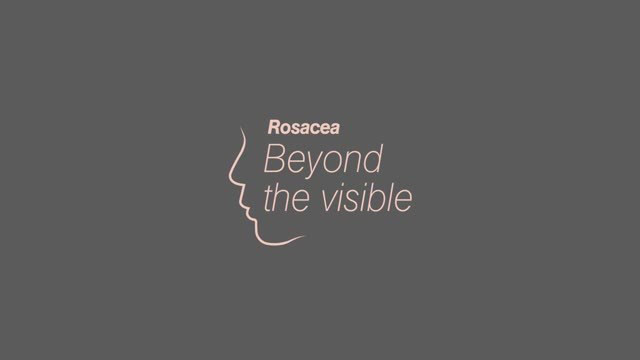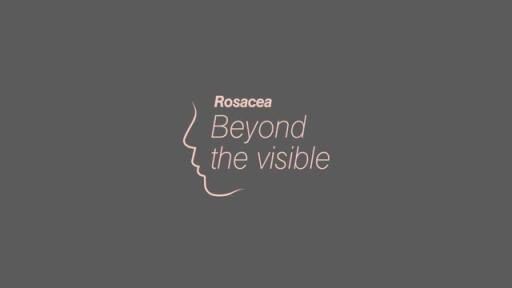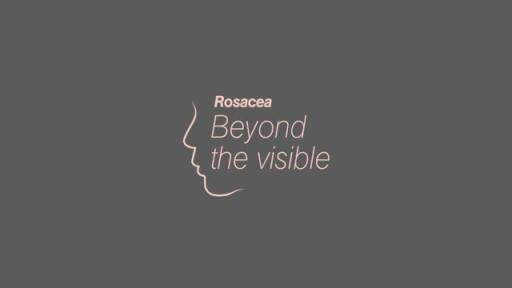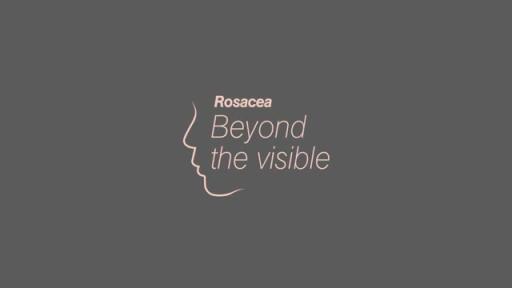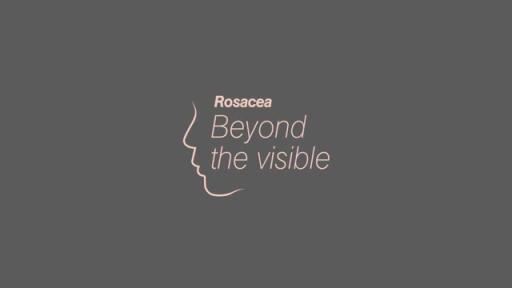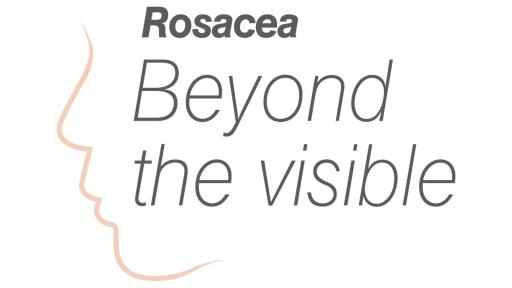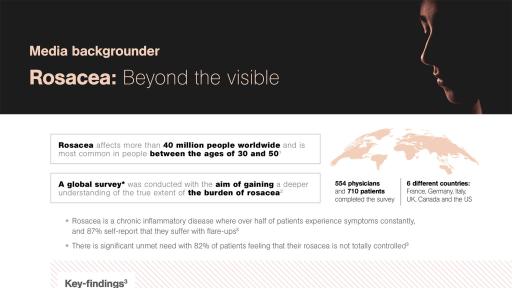Galderma Global Study Reveals True Burden Of Rosacea and Encourages Healthcare Professionals To Look ‘Beyond the Visible’
Lausanne, Switzerland – June 1, 2018 – Galderma today released the findings of a global survey highlighting the need for dermatologists and doctors to proactively open a dialogue with patients about the true burden of rosacea and ways in which they can work together to achieve ‘clear’ (IGA 0) skin*. In the form of an expert-authored report entitled Rosacea: Beyond the visible, available on the British Medical Journal (BMJ) website, the data reveals the true extent of the psychosocial burden of the disease. Every second patient reported that they would potentially be willing to trade 6 months or more of their life to cure rosacea.1 Additionally, over half of those who have worked at least one hour in the past 7 days (55%) admitted that their health problems have impacted on their work productivity.1
People who are ‘clear’ also tend to have fewer doctors visits and say that their health problems had no effect (rated 0 - 2 out of 10) on their work productivity vs. those who were ‘almost clear’.1 Despite the availability of treatments and multiple healthcare professional (HCP) visits, only 14% of patients surveyed rated themselves as ‘clear’ of symptoms at the time of reporting, highlighting the extent of the unmet need.1 People who were ‘clear’ were significantly less likely to be forced into modifying their daily behavior even in comparison to those who were ‘almost clear’ (21% vs 16% p≤0.05).1
Rosacea affects more than 40 million people worldwide and is most common in people aged between 30 and 50.2 It is a visible and relapsing condition, meaning that patients experience periods of flare-ups, and every individual’s experience is different, making it a complex disease to treat. Rosacea: Beyond the visible offers useful insights into the emotional, psychological and societal impact of the condition. According to the findings, there is a disease-related impact on patients’ quality of life. Rosacea can have a high impact at any severity, with 82% of people surveyed feeling that their rosacea is not totally controlled and 86% substantially modifying their behavior and daily lives to avoid triggering flare-ups.1
“This research alerts us to the reality that people with rosacea can feel like they are stuck in an unwinnable situation - judged on their appearance, but also worried they will be blamed or viewed as superficial if they seek help. We need to open the discussion surrounding the burden of rosacea and ensure people are comfortable talking about the impacts this illness can have on their lives.
We can help make a difference by opening the conversation with patients on the impact of rosacea to identify the more vulnerable ‘high burden’ individuals and implement a tailor-made treatment approach” comments Dr Jerry Tan, Adjunct Professor, Western University, Windsor, Ontario, Canada and one of the study authors.
The survey asked 710 patients diagnosed with rosacea and 554 dermatologists and general practitioners (GPs) in 6 different countries (France, Germany, Italy, UK, Canada and the US) questions about their experience of living with, or treating patients that are living with, rosacea.
Key findings include:
Addressing the impact of rosacea remains an unmet need
- The burden of rosacea goes beyond what patients feel physically and emotionally, the knock-on effect also impacts wider society and medical systems1
- 86% of patients modify their behavior to manage their symptoms, with 1 in 5 making substantial changes to their daily life (such as avoiding social interaction, activities with friends etc)1
- People who report that rosacea has a very large impact on their life visit their doctor more than twice as often as those whose quality of life is less severely impacted (9.9 ±10.6 vs 4.4 ±3.2 visits per year)1
- The number of patients visiting an emergency room (ER) in the past 12 months as a result of their rosacea varied from 13-26% across different countries1
- More than half of rosacea patients who worked in the past 7 days for at least one hour (55%) report that their health problems affect their work productivity1
There is a need to open the dialogue between dermatologists/GPs and patients on the burden of rosacea
- People with rosacea may feel embarrassed or ashamed to talk about their disease burden with over a third (37%) saying friends and family did not understand their condition1
- As people can be reluctant to discuss the true burden of their disease, physicians can overestimate the impact of symptoms typically associated with rosacea, but underestimate less-visible or well-known symptoms (such as stinging, burning, itching and pain)1
- 82% of patients feel that their rosacea is not totally controlled1
Aiming for ‘clear’ can help relieve the burden of rosacea
- Only 14% of people with rosacea rated themselves as ‘clear’ of symptoms at the time of the global survey. This decreased to only 1% rating themselves ‘clear’ when asked to consider the last year1
- The extra step of reaching ‘clear’ can make a difference for the people who are able to achieve it. ‘Almost clear’ isn’t always good enough. It might only take one pimple or pustule appearing on their face to upset a rosacea patient’s day1
- Less than half of ‘clear’ patients reported rosacea had no impact on their quality of life, significantly more than even ‘almost clear’ patients (49% vs 30% p≤0.05)1
- ‘Clear’ may also mean rosacea controls each person’s life less. People who were ‘clear’ were significantly less likely to be forced into modifying their daily behavior even in comparison to those who were ‘almost clear’ (21% vs 16% p≤0.05)1
- People who were ‘clear’ also tend to have a lower number of doctor visits even compared to those who were ‘almost clear’ (4.8 ±5.3 vs 5.7 ±7.5 per year p=NS)1
Healthcare professionals should aim to identify more vulnerable ‘high burden’ patients, to implement a more individualized patient approach
- Patients who report that rosacea has a severe impact on their quality of life (DLQI>10) are typically younger and are significantly more likely to be working, male and have stinging and burning skin sensations vs DLQI≤10 patients1
- Future investigation identifying contributing risk factors may reveal useful markers or insights on high burden patients that can be used in clinical practice
For related multimedia resources, please visit www.epresspack.net/galderma-rosacea
* The success of rosacea treatment is usually defined as a score of 1 (‘almost clear’) or 0 (‘clear’) on the 5-point Investigator Global Assessment (IGA) scale. Several studies have shown that patients who achieve ‘clear’ (IGA 0), a complete reduction in symptoms, experience an extended time to relapse and an improved quality of life compared with patients who are ‘almost clear’ (IGA 1).3
References:
About the BURDEN survey and the Rosacea: Beyond the visible online report
The BURDEN survey was developed by Kantar Health as a self-administered online survey and supported by Galderma. Participants were recruited using the Kantar online panel. To maximize the sample size no quota was set up. Therefore, the sample is not representative of the rosacea population of each country; consequently, the results of this study could be affected by selection bias and cannot be inferred to the whole rosacea population. Rosacea: Beyond the visible was developed under the direction and sponsorship of Galderma International, survey was conducted by Kantar Health with writing support provided by Emma Waring, Havas Life Medicom.
About Rosacea
Rosacea is a common inflammatory skin disease that presents variable clinical characteristics, of which the most common are flushing, permanent erythema, and inflammatory lesions. It mainly affects the central areas of the face, such as the cheeks and nose. The disease can affect both adult men and women, usually after the age of 30. Additionally, symptoms such as stinging, burning and increased sensitivity of the skin are common. The eyes are often affected, and might present as red, dry or itchy.
Although the cause of the disease is still under debate, various trigger factors are known, including spicy foods, alcohol, emotional stress, sun/UV-exposure, hot baths and beverages. Demodex, generally harmless mites, can also be found in the skin in an elevated quantity in people with rosacea.
Rosacea may worsen over time if left untreated. People that suspect they suffer from rosacea should visit their dermatologist or healthcare provider for diagnosis and discuss what treatment is right for them. Because rosacea is a highly visible disease, it is known to cause embarrassment and anxiety in some patients, which in turn may cause frustration and have a negative impact on their social life.
About Galderma
Galderma, Nestlé Skin Health’s medical solutions business, was created in 1981 and is now present in over 100 countries with an extensive product portfolio to treat a range of dermatological conditions. The company partners with health care practitioners around the world to meet the skin health needs of people throughout their lifetime. Galderma is a leader in research and development of scientifically-defined and medically-proven solutions for the skin. For more information, please visit www.galderma.com
Galderma media relations contact
Sébastien Cros
Global Communications
+41 21 642 76 94
[email protected]

